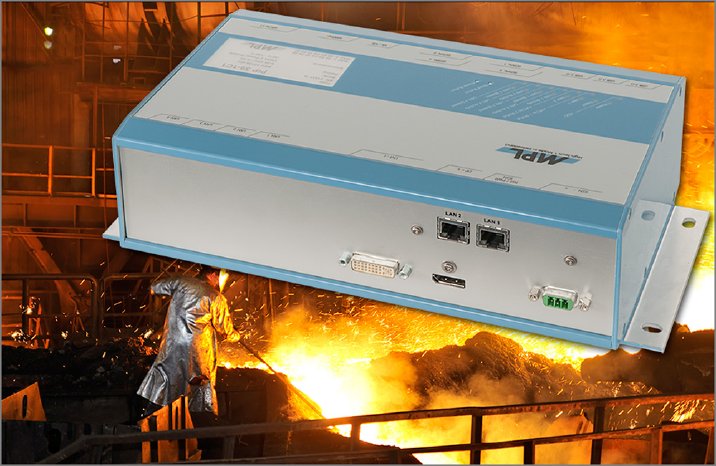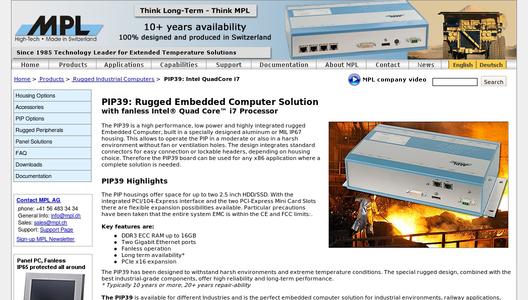Design Philosophy
• The PCB is specifically engineered for best thermal conduction to the enclosure (all components with high heat dissipation are on PCB bottom side).
• Six GND planes are implemented in PCB to achieve:
- best thermal conduction for better stability and reliability.
- better signal transmission line reference path, resulting in higher stability and reliability.
• Quad Core CPU is soldered directly to the PCB for an ideal thermal conduction, resulting in better reliability.
• All power rails have a controlled power up, resulting in no extensive power up currents with the benefit of less stress to the device and components.
• Low impedance power distribution network for CPU, chip set, and all the other high speed electronic devices, resulting in stable parameters over the lifetime and the wide temperature range.
• Wide use of PCB internal capacitance, X7R / X7S (-55°C to +125°C) ceramic caps and polymer aluminum caps, giving a substantial better PI (power integrity).
General Highlights
The input of the PIP39 is reverse polarity and load dump protected. The input power range is 10-36VDC, optionally up to 48–110VDC (redundant input is also possible). The solution is designed such, that an internal UPS system with external removable battery can be added, even for extended temperature. If a galvanic separation is required due to standards e.g. for Marine or Mining applications, then this can be added internally as well.
Interfaces
The PIP39 comes with a large set of interfaces, including two GigE ports, dual Display capability, numerous USB (3.0 and 2.0) ports, up to 4 Serial Lines, PS/2, and Audio. Internally available are four SATA ports, and the unit can easily be expanded over various expansion ports like miniPCIe, PCIe/104, or PCI-Express x 16.
Packaging & Standards
The PIP39 is offered in the standard PIP housing (DIN-Rail or Flange), in a IP67 MIL housing, or as open-frame solution. The PIP39 is designed to meet most severe standards like IEC60945, MIL-810, or EN50155. The Solution will meet your needs today and tomorrow, and will be available for at least the next 10 years.


